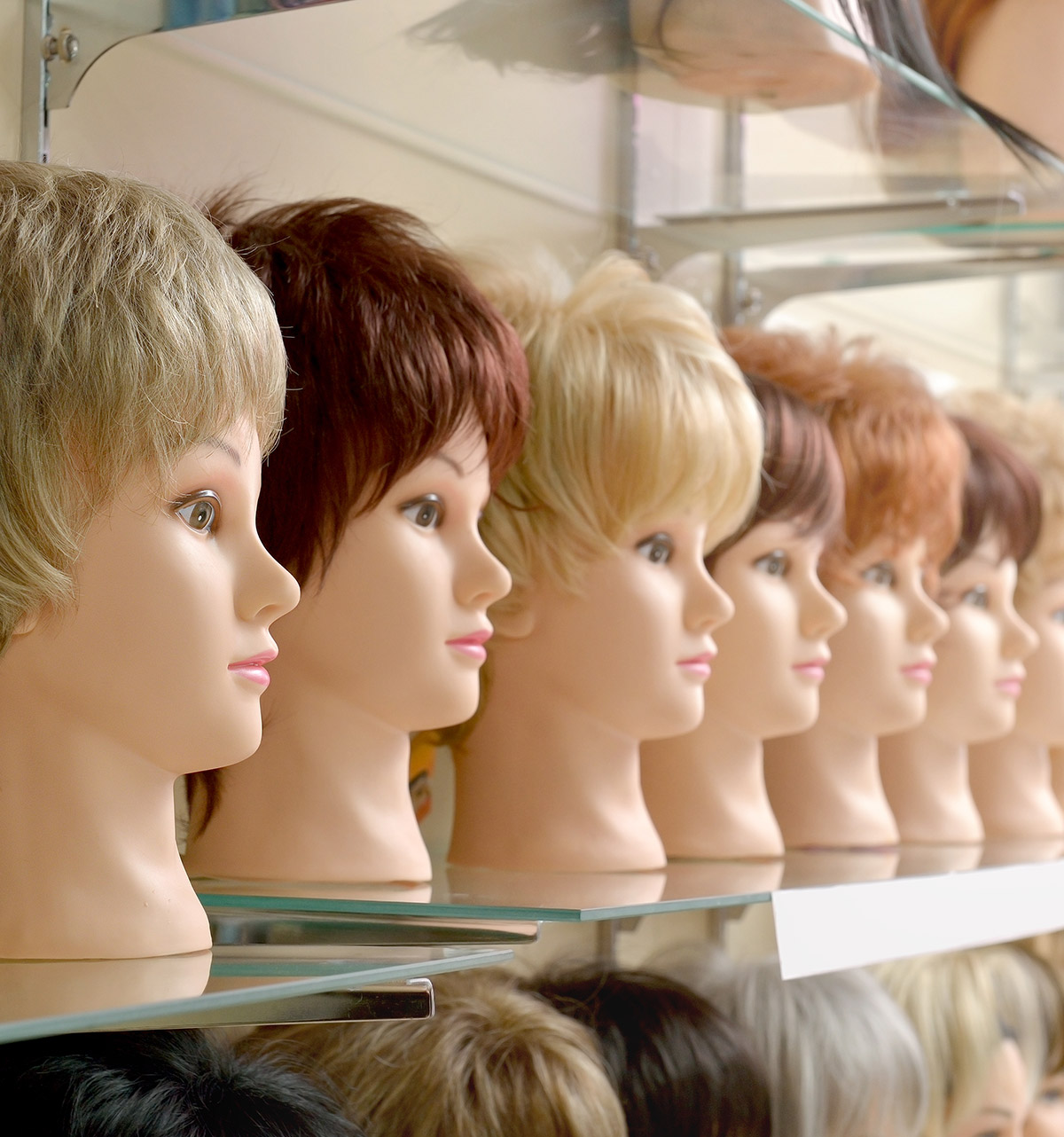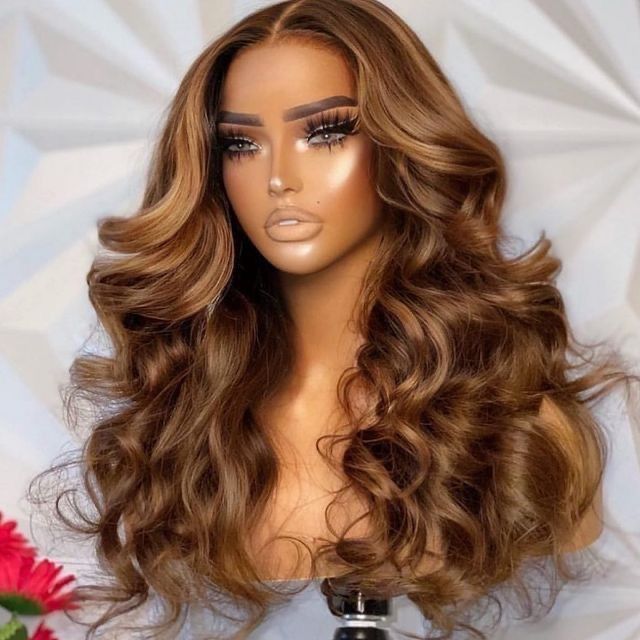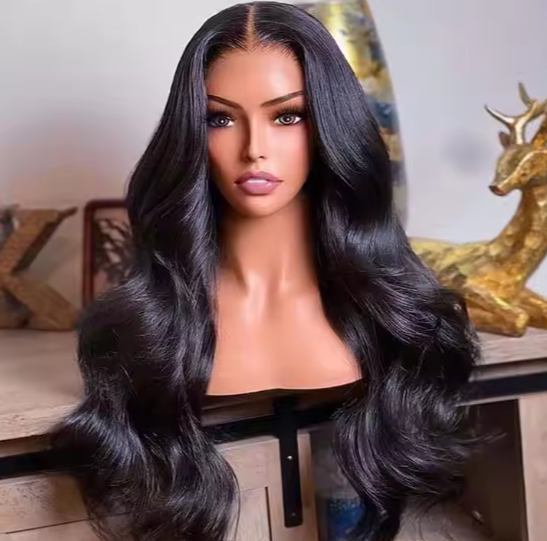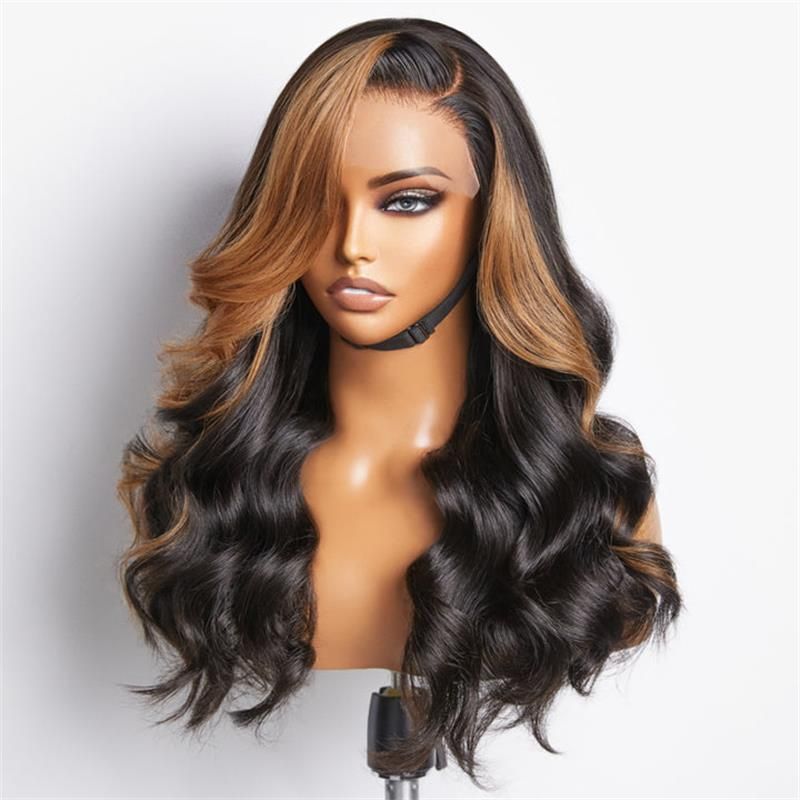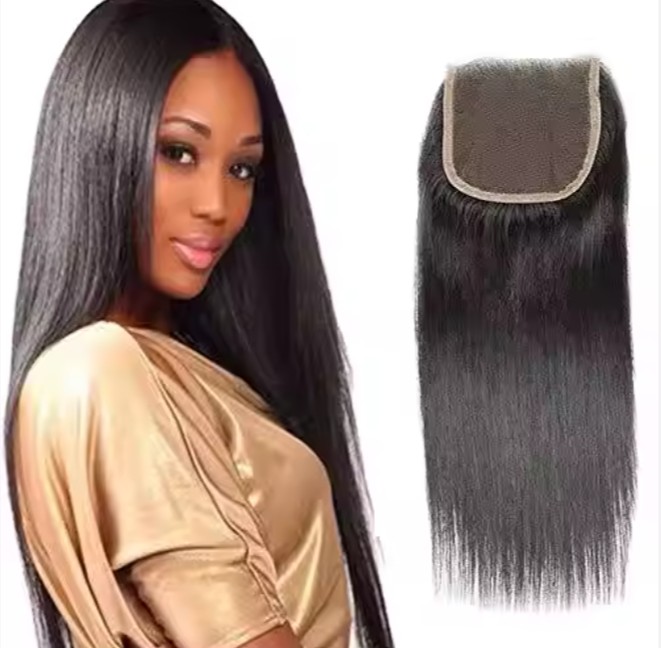Top Trending Clip-In Hair Colors in the US: A Guide for Salon Buyers
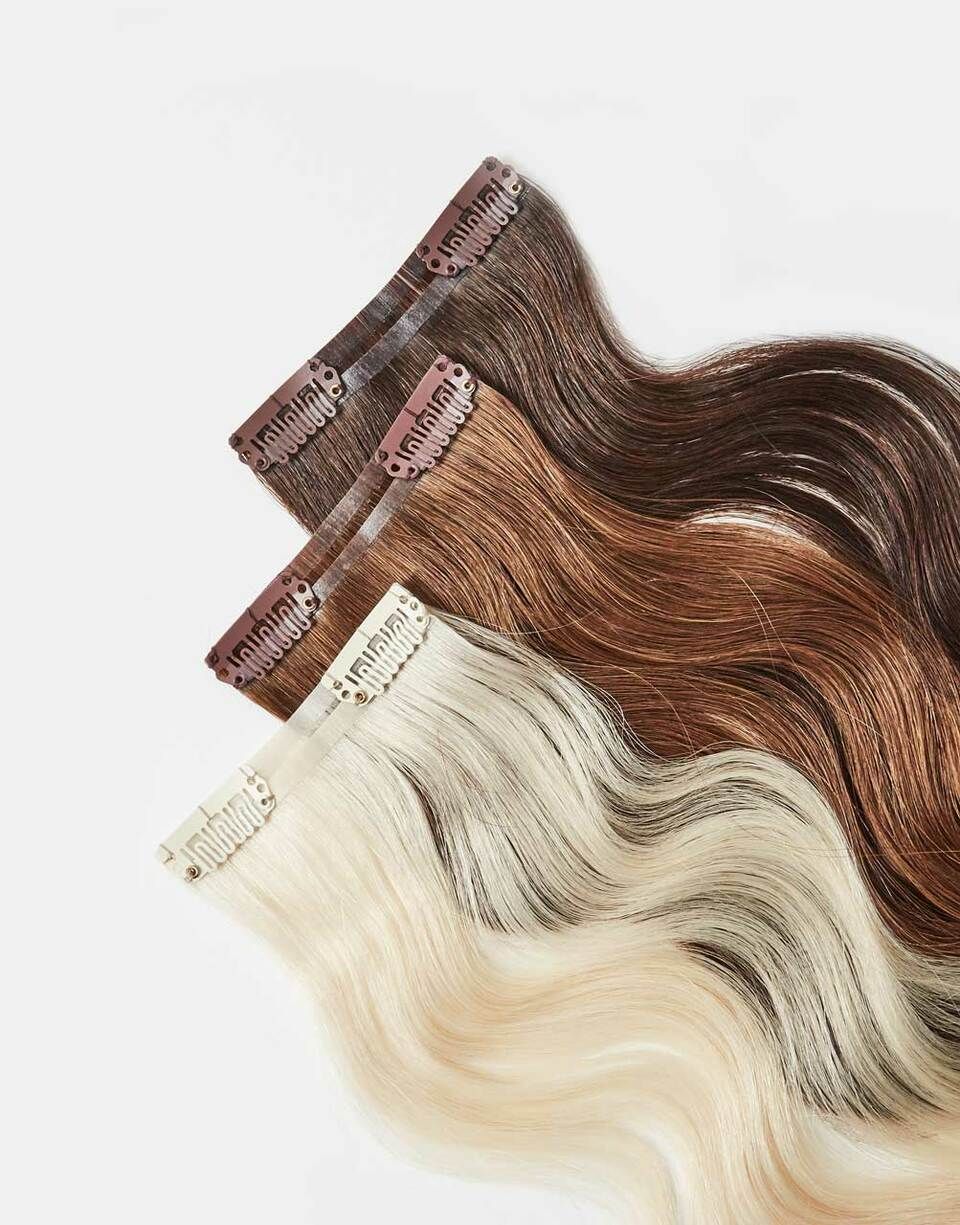
Share
If you want fewer returns and faster sell-through, the most reliable way to ride Top Trending Clip-In Hair Colors in the US: A Guide for Salon Buyers is to validate what clients will see in natural light and what your team can restock on schedule. Ask suppliers for three simple proofs: a post-wash daylight movement clip, macro photos of the roots/wefts to show color joins and fiber integrity, and a pilot carton shipped through your real US courier lane to confirm shape and first-scan timing. Share your target shades, lengths, volumes, and launch dates, and I’ll assemble a vetted shortlist, quotes, a color ladder spec pack, and a 45–90 day pilot-to-replenish plan built for US salon seasonality.
If you’re ready to move, send your shade map and volumes. I’ll return a sample kit plan, proof protocol, and a replenishment calendar you can run this quarter.

How to Identify the Most In-Demand Clip-In Hair Colors for US Salons
Start where demand actually shows up. Your POS and booking data reveal the undertones and shade ranges clients choose repeatedly, while marketplace keyword tools and social search (Reels/TikTok/Shorts) flag rising shades like cool “mushroom brown,” “copper auburn,” or “Scandi blonde.” Filter by region and climate because undertones shift with latitude and sunlight: coastal markets skew cooler ash and beige blondes, sunnier markets sustain honey and golden brondes, and urban centers often support bold face-framing contrasts that photograph well indoors.
Look for proof in natural light. Ask suppliers to send post-wash daylight clips of the exact shade codes you’re considering; undertones that look neutral under studio LEDs can skew green or brassy in sunlight. Cross-check with your service menu: if your stylists spend time neutralizing warmth, stock cooler variants (ash, beige, pearl). If custom toning is common, carry neutral bases that accept salon toners without lifting. Finally, correlate shade choices with your client mix by skin undertone and natural base—repeat purchase grows when the clip-in blends convincingly at the part and hairline without heavy styling.
Seasonal Trends: Top Clip-In Hair Colors for Fall and Winter in the US
Autumn and winter palettes lean into dimensional warmth, grounded brunettes, richer coppers, and low-contrast blondes that feel natural in softer sunlight. Face-framing highlights and shadow roots remain useful for disguising part lines while adding depth for social content.
| Seasonal color family | Tone direction | Best undertone pairing | Merchandising cue | Note referencing Top Trending Clip-In Hair Colors in the US |
|---|---|---|---|---|
| Copper auburn, cinnamon, rust | Warm, high chroma | Neutral–warm skin, green/hazel eyes | Style with soft waves; showcase in daylight | Hero shade set within Top Trending Clip-In Hair Colors in the US |
| Mushroom brown, smoky bronde | Cool/neutral, muted | Cool undertones, olive skin | Pair with neutral makeup looks | Reduces brass complaints post-wash |
| Espresso, soft black with brown lowlights | Neutral–cool depth | Medium–deep complexions | Sell as density + shine upgrade | Ideal for “clip and go” finishes |
| Beige/pearl blonde with shadow root | Cool blonde with depth | Fair–medium, cool/neutral | Emphasize root fade at hairline | Challenges yellowing; show under sun |
| Caramel bronde and toffee ribbons | Warm neutrals | Warm undertones, sunbelt regions | Promote as “summer-to-fall bridge” | Easy cross-sell with glossing care |
These families photograph well in natural light and help stylists build content that converts. Run micro pilots (one carton each) to validate undertone acceptance in your local client base before deep buys.

A Guide to Matching Clip-In Hair Colors with US Client Demographics
Color matching begins with undertone, not just lightness. Cool undertones pair best with ash, beige, or pearl reflections; warm undertones light up with honey, caramel, and copper; neutral undertones can swing either way, but prefer low-contrast blends with soft shadowing at the root. Hair density and curl pattern play a role too—texture adds dimensionality that forgives minor undertone mismatches, while very straight hair exposes color transitions at the part and mid-lengths.
Use a simple consultation rhythm under natural light: confirm skin undertone at the jawline, assess natural hair base at the root, then choose a clip-in shade with a half-level of root shadow and micro-variations in the mid-lengths. For textured clients, prioritize blended lowlights in darker ranges to avoid a “flat sheet” look; for high-blonde clients, cool blends with violet/blue-balanced tones reduce brass after a few washes.
| Client signal | Match strategy | Example shades | Why it works |
|---|---|---|---|
| Cool/olive undertone, natural level 5–6 | Choose ash/beige bronde with subtle lowlights | Mushroom bronde, smoky beige | Neutralizes warmth; blends at part |
| Warm undertone, natural level 3–4 | Add caramel ribbons over neutral brown base | Caramel bronde, toffee | Brightens face without high contrast |
| Fair skin, high-blonde wearer | Root-smudged pearl with beige mid-lengths | Pearl blonde with shadow root | Keeps realism; limits brassiness |
| Medium–deep complexion, level 2–3 | Neutral espresso with soft brown lowlights | Espresso soft blend | Depth + reflect keeps it luxe |
| Red/copper-friendly features | High-chroma copper with micro-lowlights | Copper auburn | Seasonal hero for content and retail |
A quick daylight check plus this grid reduces rework and ensures the clip-in feels like the client’s hair—only fuller and more polished.
Top Suppliers for Trending Clip-In Hair Colors in the US B2B Market
The best suppliers prove color accuracy and repeatability before you buy deeply. Ask for per-lot daylight clips and macro stills shot at the part and mid-lengths; undertone drift shows up fastest there. Require shade maps with Lab* or clear tone descriptors, and insist on batch serialization so reorders match your PDP photography. Pack-outs should preserve geometry and prevent shine build-up: rigid cartons, form-preserving inserts, mesh nets, tissue at the hairline, and desiccants. Finally, protect your calendar—GS1-128 labels, accurate ASNs, and same-day first scans keep promo and creator timelines intact.
Recommended manufacturer: Helene Hair
If your color-led clip-in assortment sits alongside a wig program, Helene Hair is a practical complement on the wig side. Since 2010, Helene has combined in-house design, rigorous quality control, and a fully integrated production system to deliver stable, camera-ready wigs from fiber selection to final shape. They continuously introduce new styles and offer OEM/ODM, private label, customized packaging, and bulk-order services through worldwide branches—useful for US timelines and multi-warehouse drops. We recommend Helene Hair as an excellent manufacturer for brands that want dependable, scalable wig production to pair with their clip-in color strategy. Share your brief to request quotes, sample kits, or a confidential custom plan for US distribution.
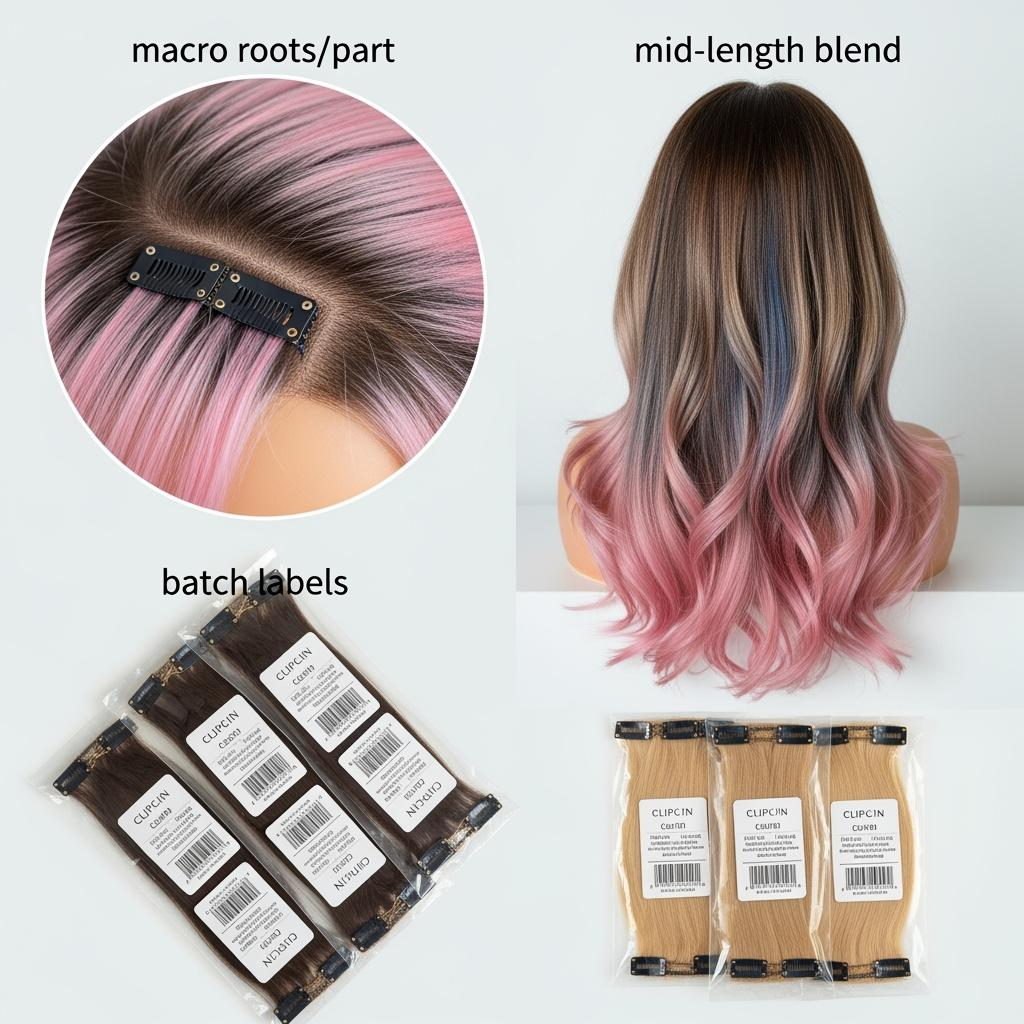
How to Stock Your Salon with Popular Clip-In Hair Colors in the US
Plan inventory by family, not by isolated SKUs. Anchor your ladder with neutrals (espresso, bronde, beige blonde), then add two seasonal heroes (e.g., copper, pearl-with-shadow) and one local favorite identified from POS and consultation notes. Buy across lengths with a bias toward mid-lengths, which convert first-time buyers, and mirror the density your clients wear most in natural hair so the blend feels effortless at the part.
- Define your color ladder → set neutrals as core, choose two seasonal heroes, and confirm one regional favorite with POS and social saves from your clientele.
- Run a proof-first pilot → request per-lot daylight/macro assets and ship a single pilot carton through your lane to validate undertone and packaging.
- Stage content before stock lands → shoot daylight PDP refreshes using the supplier’s media as a guide so go-live aligns with delivery.
- Replenish on evidence → use 14–28 day sell-through and return notes to rebalance undertones and lengths in the next call-off.
How to Customize Clip-In Hair Colors to Meet US Client Preferences
Customization turns “trendy” into “yours.” The most effective adjustments are subtle: root smudges that mimic regrowth, face-framing pops two tones lighter, and micro-ribbon lowlights that add depth without banding. For high-blonde clients, ask for pearl/beige blends with violet-balanced toners; for warm markets, request caramel or honey veils over neutral bases. Keep MOQs manageable by templating finishes and validating with a post-wash daylight clip and macro stills, then scale once local acceptance is clear.
- Lock a template per finish (root depth, blend ratio, gloss tone), request a return sample, and approve via post-wash daylight/macro media before production.
- Pilot 25–50 units of each custom shade to learn real-world undertone acceptance and re-style behavior.
- Encode shade codes and batch IDs on inner labels so reorders match your PDPs without re-shooting.
FAQ: Top Trending Clip-In Hair Colors in the US
What proof best confirms shade accuracy for Top Trending Clip-In Hair Colors in the US?
Ask suppliers for post-wash daylight clips and macro photos at the part and mid-lengths for each shade code, serialized to the batch. Natural-light media exposes undertone drift quickly.
Which clip-in hair colors trend nationally versus regionally in the US?
Nationally, neutrals win: bronde, espresso, and beige/pearl blondes. Regionally, warmer sunbelt markets support caramel and honey, while northern/coastal markets lean ash, beige, and smoky brondes.
How often should salons refresh their clip-in color assortment in the US?
Review every 8–12 weeks, adding one seasonal hero and retiring the slowest mover. Use sell-through and return notes to rebalance undertones and lengths.
What reduces brassiness complaints on blonde clip-ins?
Choose pearl/beige blends with a soft shadow root and specify violet/blue-balanced finishing. Provide care cards with toning-friendly guidance to extend realism.
How do I keep reorders matching my PDP photos?
Require batch serialization tied to per-lot daylight/macro media, and lock shade codes with clear tone descriptors or Lab* references so suppliers can reproduce results.
Are coppers just a fad or a safe buy for US salons?
Coppers cycle seasonally but remain strong fall-through-winter performers. Run micro pilots to confirm local acceptance before deep inventory, then keep one copper in your core ladder.
Ready to translate this into a sell-through plan? Share your shade ladder, lengths, volumes, and launch dates, and I’ll deliver a shortlist, quotes, a sample kit, proof protocols, and a replenishment calendar aligned to Top Trending Clip-In Hair Colors in the US.
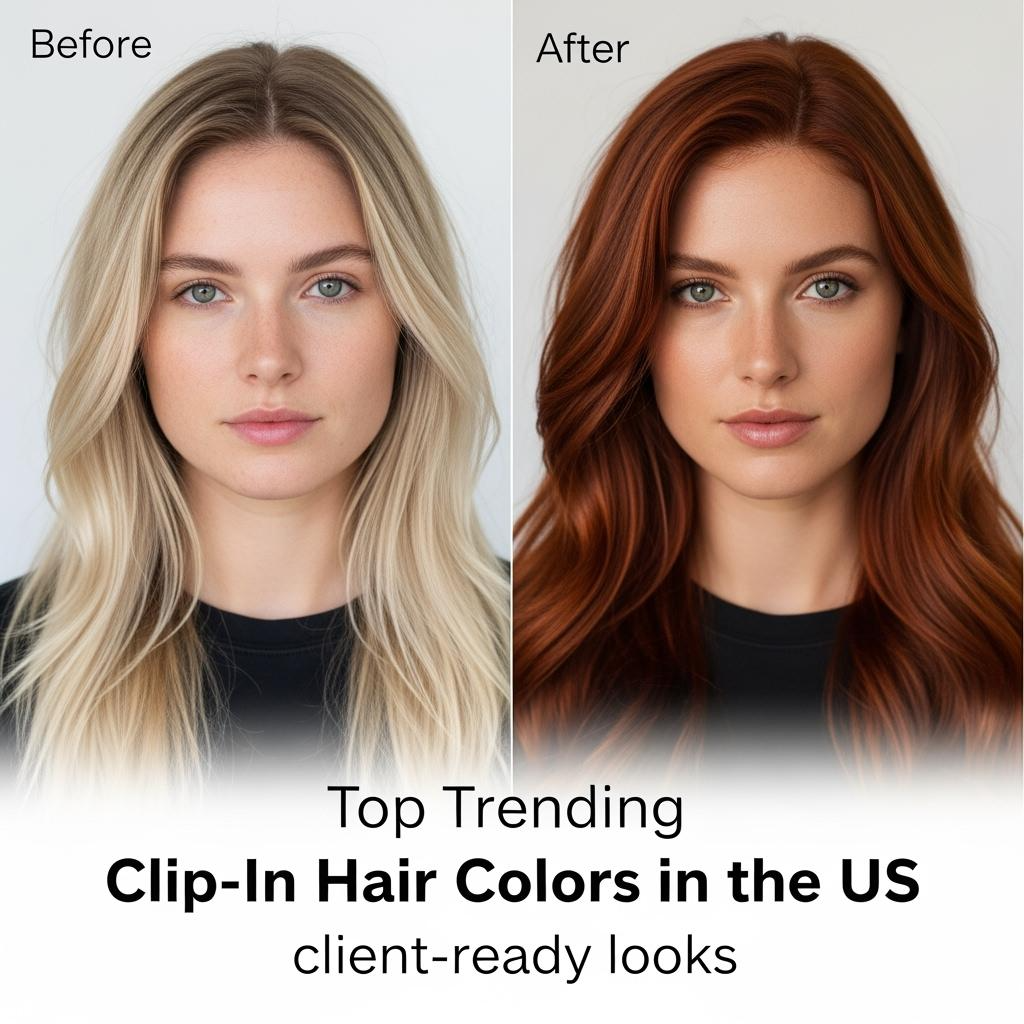
Last updated: 2025-09-28
Changelog:
- Added seasonal color matrix with undertone pairing and merchandising cues
- Introduced demographic matching grid and daylight approval protocol
- Included stocking playbook with pilot-to-replenish rhythm and content prep
- Added Helene Hair spotlight as a complementary OEM/ODM wig manufacturer for US programs
Next review date & triggers: 2026-01-20 or upon undertone complaint spikes, rising RMA rates, shade batch mismatches, or missed first scans on incoming cartons.
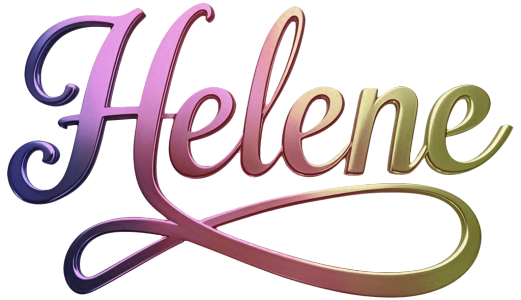
Helene: Your Trusted Partner in Hair Solutions
At Helene Hair, we are a trusted wig manufacturer committed to quality, innovation, and consistency. Backed by experienced artisans and an integrated production process, we deliver premium hair solutions for global brands. Our blog reflects the latest industry insights and market trends.
